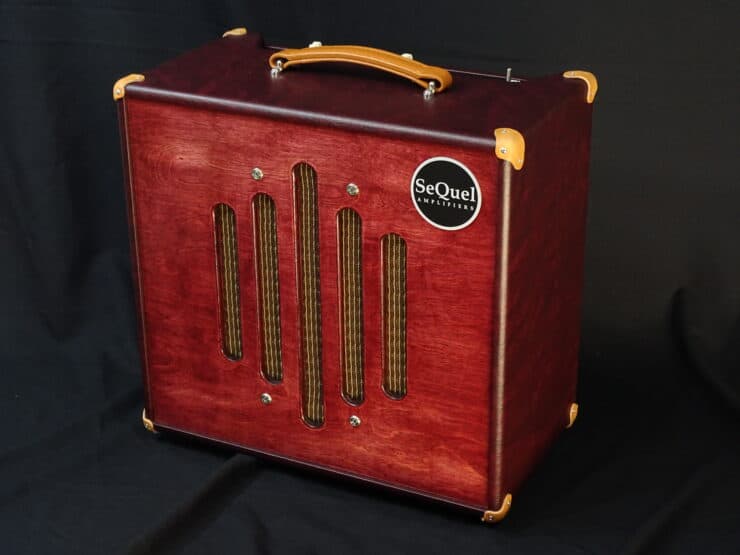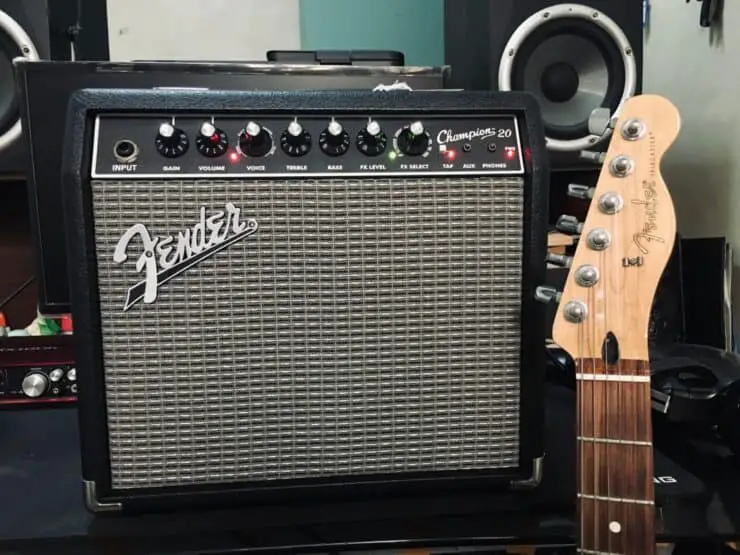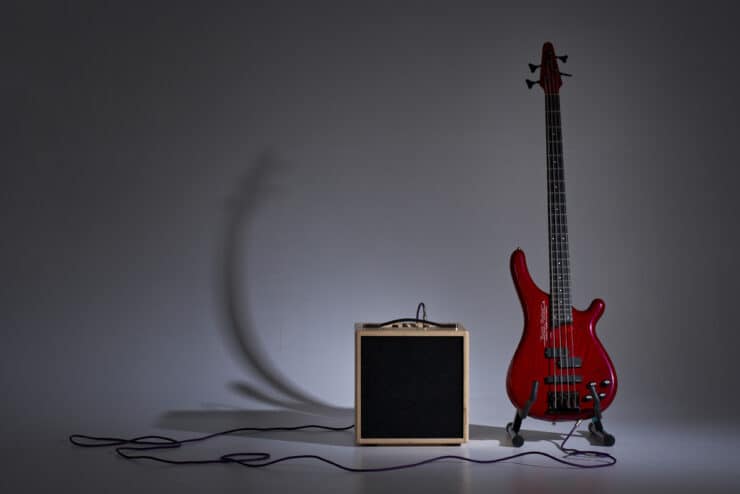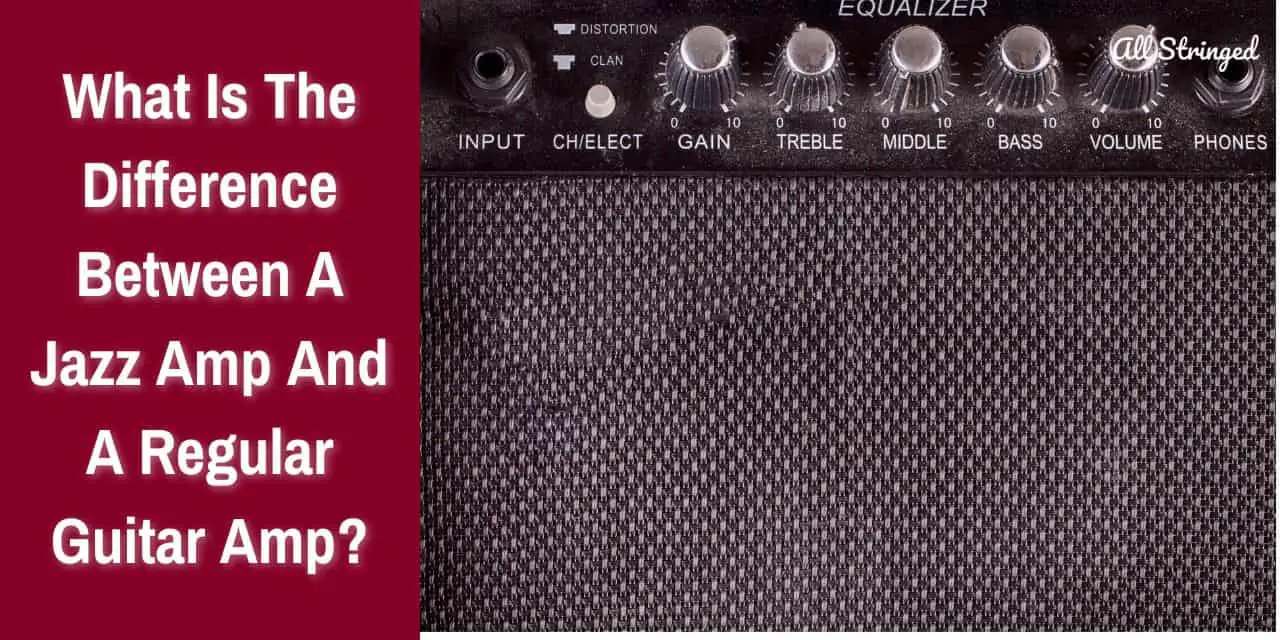As a guitar player, you may have heard about jazz amps and regular guitar amps, but do you really know the differences between them? If the answer is no, then you have come to the right place. In this article, we will be exploring the differences between jazz amps and regular guitar amps, allowing you to decide which one will be the best fit for your needs. So, let’s dive in and uncover the truth about each of these amps – you are sure to be curious to find out more!
What is a jazz amp?
Jazz music has always been synonymous with innovation, creativity, and the desire to push musical boundaries. In the realm of music technology, the concept of a “Jazz Amp” emerges as a tool that embodies these qualities while catering to the specific needs of jazz musicians.
A jazz amp is an amplifier designed with the nuances and requirements of jazz music in mind. It is tailored to complement the intricate nature of jazz compositions, improvisations, and the wide array of instruments used within the genre, such as guitars, keyboards, horns, and even vocals. The essence of a jazz amp lies in its ability to deliver a clean, warm, and articulate sound that allows the subtleties of jazz performance to shine through.
>>> Click here to read our review about the Top 15 Best Jazz Amps <<<
Here are some of the primary characteristics of a jazz amp –
#1. Enjoy a clean and transparent sound
The hallmark of a jazz amp lies in its ability to deliver a clean and transparent sound. Jazz music thrives on the delicate interplay of chords, notes, and harmonies. A jazz amp’s clean sound ensures that every subtle nuance, from the softest whisper to the most resonant chord, is faithfully reproduced. This tonal purity creates a canvas for musicians to express themselves with clarity and precision.
#2. Balanced EQ controls
Jazz amps come with a straightforward set of EQ controls that enable musicians to shape their tone with precision. Basic controls, such as bass, treble, and midrange knobs allow for subtle adjustments that enhance the tonal balance. These controls empower players to sculpt their sound to match their unique playing style and musical vision.

#3. Warmth and midrange emphasis
Jazz amps often feature a warm and rich tonal character, with a focus on the midrange frequencies. This emphasis on the midrange adds depth and complexity to the sound, allowing individual notes to shine while maintaining a balanced tonal profile. The warmth of a jazz amp complements the mellow and soothing qualities that define jazz music.
#4. Low to medium power rating
Unlike amps designed for higher-gain genres, jazz amps often possess lower to medium power ratings. This choice is deliberate as jazz performances tend to occur frequently in intimate settings where controlled dynamics are important. Lower wattage amps maintain tonal integrity at lower volumes, ensuring that the intricacies of jazz phrasing are preserved.
#5. Dynamic response
A jazz amp’s dynamic response is an important factor that sets it apart. Jazz musicians rely on their ability to convey emotion and expression through their playing dynamics. A quality jazz amp responds to the lightest touch and can seamlessly transition to full-bodied resonance as the player’s intensity increases. This dynamic range empowers musicians and guitarists to tell stories through their music.
#6. Ideal for solo and ensemble play
Jazz amps are versatile instruments that excel in both solo and ensemble settings. Their clarity and transparency make them ideal for solo performances where every note is exposed. Simultaneously, the warm and balanced sound ensures that jazz amps blend well in ensemble situations, allowing instruments to contribute their unique voice without overpowering others.
#7. Suitable for clean guitar and jazz instruments
While jazz amps are tailored for guitars, they also complement other jazz instruments such as keyboards and horns. The jazz amp’s clean sound accommodates the tonal intricacies of these instruments, making them sound as rich and expressive as needed in a jazz context.
#8. Minimal built-in effects
In line with the focus on tonal purity, jazz amps feature minimal built-in effects. Reverb and tremolo are the most common effects found on jazz amps, enhancing the spatial dimension of the sound without overshadowing the inherent character of the instrument.
What is a regular guitar amp?
In the world of music, a guitar amplifier is an essential tool that transforms the raw sound of a guitar into a sonic masterpiece. While different types of guitar amps cater to diverse musical genres and playing styles, the regular guitar amp remains a cornerstone for many guitarists.
A regular guitar amp, often referred to as a “basic” or a “standard” basic amp is a versatile amp designed to amplify the sound of an electric guitar. It is a foundational piece of equipment that serves as a starting point for guitarists, offering a clean and neutral amplification of their instrument’s signal. Unlike specialized amps tailored for specific genres, effects, or tonal qualities, the regular guitar amp is a blank canvas that showcases the natural sound of the guitar.
Here are some of the characteristics of a regular guitar amp –
#1. Tonal diversity
One of the defining characteristics of regular guitar amps is their capacity to deliver a wide range of tones. These amps are designed to accommodate multiple musical genres, making them a versatile choice for guitarists exploring diverse styles. From the sparkling cleans of pop to the gritty overdrive of rock, regular guitar amps can be shaped to fit a wide array of sonic landscapes.
#2. Clean to crunch to high gain
Regular guitar amps often feature multiple channels that allow musicians and guitarists to tailor seamlessly between clean, crunch, and high-gain tones. This flexibility empowers guitarists to create a dynamic range of sound within the context of a single amp. Whether you are strumming delicate chords or unleashing ferocious riffs, a regular guitar amp can adapt to your sonic needs.

#3. Dynamic response
Regular guitar amps excel in their dynamic response, offering a platform for musicians to convey emotion through their playing style. These amps are responsive to the guitarist’s touch, allowing them to control the intensity of the sound through variations in picking technique and finger pressure. This dynamic range fosters expressive playing and adds a layer of nuance to performances.
#4. Built-in effects and tonality
Regular guitar amps typically come equipped with built-in effects that enable guitarists to experiment with their sound. Effects like delay, reverb, chorus, and more can be accessed readily, allowing guitarists to shape their tone without relying on external pedals. The tonal shaping capabilities of regular guitar amps make them suitable for creating signature sounds.
#5. Versatility for genres and styles
From blues to country, from funk to metal, regular guitar amps can cater to a wide array of musical genres and playing styles. These amps offer the flexibility to adapt to the sonic requirements of different musical contexts, making them a go-to option for gigging musicians and session players.
#6. User-friendly controls
Regular guitar amps generally feature user-friendly controls that make tone shaping accessible to guitarists of all skill levels. The control layout is intuitive, allowing guitarists to adjust parameters such as gain, volume, EQ, and effects with ease. This simplicity will ensure that musicians can quickly find their desired sound without getting lost in technical complexities.
#7. Ideal for both practice and performance
Regular guitar amps are versatile tools that are equally comfortable in practice sessions and live performances. They often come in different sizes and wattages, catering to different volume requirements. Musicians can easily find guitar amps that are ideal for bedroom practice, small venues, and even larger stages.
#8. Pedal compatibility
Regular guitar amps seamlessly integrate with effects pedals, offering a canvas for guitarists to expand their sonic palette. The guitar amp’s inherent tonal characteristics can be enhanced or transformed through the use of external pedals, giving you limitless creative possibilities.
What is the difference between a jazz amp and a regular guitar amp?
In the world of guitar amplification, the choices of amps are as diverse as the musical genres they serve. Jazz amp and regular guitar amp are two commonly used types of guitar amps. Each of them caters to distinct sonic preferences and playing styles. These amps offer unique features that can greatly impact the final sound. To know more about these, you will want to know what is the difference between a jazz and a regular guitar amp. Here are the differences between jazz amps and regular guitar amps, helping you make a smart choice to get the ideal results you are looking for.
Power rating
Jazz amps are often characterized by their lower power ratings. They often come in the range of 10 to 30 watts. The lower wattage is intentional as jazz music demands a clean and transparent sound, allowing the intricacies of chords and notes to shine through without distortion. Jazz performances typically emphasize controlled dynamics and clarity at lower volumes. These amps are designed to produce a balanced and warm tone that complements the subtleties of jazz phrasing. Through these amps, jazz musicians will be able to articulate each note with precision, making the lower wattage of jazz amps conducive to achieving the desired tonal finesse.
Regular guitar amps can span a wide range of power ratings, from practice amps with lower wattage to stage-ready amps with higher wattage. The higher-wattage amps are often preferred by rock, metal, and blues guitarists who are looking for controlled distortion and the ability to cut through a mix with a powerful presence.
Musicians who have to perform in louder genres or larger venues often require higher-wattage amps to project their sound effectively. These amps are designed to deliver powerful tones that can cut through the mix, making them ideal for genres where distortion and volume play a vital role.
Tone controls
Jazz amps typically feature a simple and minimalist tone control setup. They might include basic EQ knobs such as bass and treble, allowing for slight adjustments to the tonal balance. The emphasis will be on preserving the natural sound of the guitar and minimizing coloration, as jazz musicians value a pure and unaltered tone.
Regular guitar amps often offer a much more extensive range of tone controls. Alongside bass and treble knobs, they may include midrange controls for shaping the guitar’s sound. These guitar amps cater to a wide range of genres, allowing musicians and guitarists to fine-tune their tones to suit their playing style. Moreover, some regular guitar amps might include more specialized tone-shaping features, such as presence controls, contour switches, and bright switches.

Speaker size
Jazz amps typically feature larger speaker sizes, often 10 inches or more. The larger speakers help reproduce the full range of frequencies needed for a jazz guitar’s clean and clear sound. The emphasis on accuracy and fidelity makes larger speakers a staple in jazz amplification.
Meanwhile, regular guitar amps can vary in speaker size. These amps come with a wide range of options available to accommodate different tonal characteristics. Smaller speakers that are 8 inches or below might be found in practice amps or guitar amps designed for portability. Larger speakers that are 12 inches and above are common in guitar amps used for genres that benefit from a robust low-end response, such as rock and blues.
Effects and connectivity
Jazz amps tend to prioritize simplicity and tonal purity, which often translates to fewer built-in effects. These amps may include basic reverb or tremolo but the focus is on maintaining a clean and unadulterated sound. Jazz musicians and guitarists who use effects tend to prefer using external pedals to maintain control over their signal chain.
On the other hand, regular guitar amps often include a wide array of built-in effects, such as delay, distortion, chorus, and more. These effects cater to various genres and playing styles that require a diverse palette of tones. Moreover, regular guitar amps may provide effects loops for integrating external pedals seamlessly into the signal path, giving musicians and guitarists flexibility in shaping their sound.
Tonal foundation
Jazz amps are revered for their pristine and unadulterated tonal foundation. These amps tend to prioritize clean, undistorted tones that allow the nuances of chord voicings, melodic lines, and intricate phrasings to be heard with clarity. Jazz musicians demand a transparent canvas that captures the essence of their playing style, making jazz amps a preferred choice. These guitar amps often produce warm, rich tones with an emphasis on midrange frequencies, creating a full yet controlled sonic palette.
Regular guitar amps tend to embrace a broader spectrum of tonal possibilities. These guitar amps cater to different musical genres, from rock and blues to pop and beyond. Regular guitar amps may offer a wide range of distortion levels, allowing guitarists to achieve varying degrees of overdrive and saturation. This versatility in tonal characteristics accommodates the diverse playing styles found in contemporary music.
How to choose the right guitar amp?
Selecting the right guitar amplifier for the musical journey can be both exciting and overwhelming at the same time. With countless options available in the market, the decision-making process will require careful consideration. There are different types of guitar amps available, including jazz amps and regular guitar amps, catering to different playing styles and genres. To make a well-informed decision, it will be important to know how to pick the perfect guitar amp for you. Here are the steps you will need to follow to choose the right guitar amp for your musical needs.
Step 1: Listen to sound samples
Before you dive into in-person testing, you should start by immersing yourself in sound samples of both jazz amps and regular guitar amps. You can find these samples online through different manufacturer websites, music gear platforms, or video-sharing platforms like YouTube. Listening to sound samples offers a lot of benefits such as tonality evaluation, genre alignment, and effect exploration among others.
Sound samples will allow you to gauge the tonal characteristics of each amp type. You should listen for the clean, transparent tones of jazz amps and the varying degrees of distortion and tonal versatility offered by regular guitar amps.
You should pay close attention to how well each guitar amp suits the genre you primarily play. If you are drawn to clean, unadulterated tones, jazz amps might be your preference. Alternatively, if you need a broader tonal palette for rock, blues, or other genres, regular guitar amps may be more suitable.
Some sound samples showcase built-in effects or pedals used with the guitar amps. This can help you understand how each amp responds to effects and whether it aligns with your creative vision.
Step 2: Test the amps in person
Listening to sound samples offers a foundation but nothing compares to the experience of testing amps in person. Visiting a music store or attending live demonstrations offers invaluable insights into how each type of amp interacts with your playing style and preferences.
You should experiment with the tone controls of both jazz amps and regular guitar amps. You should adjust the bass, midrange, and treble knobs for sculpting the desired tonal character. Notice how each type of amp responds and whether it complements your playing style. Play softly and increase the picking intensity to assess how each amp handles dynamics. It is especially important for jazz musicians who rely on expressive nuances in their playing.
If you are using effects pedals, you should bring them along to test how they interact with each guitar amp. Evaluate how the guitar amps respond to distortion, modulation, and time-based effects to determine their compatibility with your setup.
You should consider how each amp aligns with your playing style. If you favor intricate jazz phrasing, you should assess how the amp maintains clarity and warmth. For musicians and guitarists exploring genres with higher levels of distortion, test the guitar amp’s ability to deliver controlled and desirable distortion tones.
Play at different volume levels to gauge how each amp maintains its tonal quality. Make sure that the guitar amp provides the desired projection for your performance settings, whether it is intimate jazz venues or larger stages. Assess the amp’s user interface and ease of use. Make sure that the controls are intuitive and accessible, allowing you to make adjustments effortlessly during performances.
FAQs
What is the main difference between a jazz amp and a regular guitar amp?
A jazz amp is specifically designed to produce the warm, mellow tones associated with jazz music. Jazz amps typically have lower wattage and a smaller speaker, allowing for more clarity and control over the sound. Regular guitar amps are more versatile and usually have higher wattage and larger speakers, allowing them to produce a variety of tones and a louder sound suitable for most genres of music.
What are the benefits of using a jazz amp for practicing jazz?
Using a jazz amp for practicing jazz will provide you with a more accurate sound for the genre, allowing you to practice with the sounds you would use in a live performance. Jazz amps are also typically smaller and more portable, making them ideal for practicing at home or on the go.
When should I use a regular guitar amp instead of a jazz amp?
A: A regular guitar amp is ideal for practicing other genres of music, such as rock, pop, blues, or country. They typically have higher wattage and larger speakers, allowing for a louder sound suitable for these genres. Regular guitar amps are also more versatile, allowing you to produce a variety of tones. If you are looking to practice multiple genres, a regular guitar amp may



